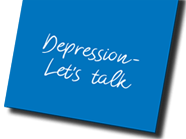Triggering or precipitating factors
The short-term triggers of a depression can also be seen as two sides of a coin. Examples for acute triggers on the psychosocial level can be the loss of a loved one, relationship conflicts or changes in a life situation. Also positive life changing events such as a change of residence or passing a test can trigger a depression episode. At the neurobiological level changes in specific hormones, like stress hormones (cortisol) can be possible triggers.
Vulnerability and resilience factors
Both psychosocial and neurobiological factors can be responsible for an increased vulnerability to a disorder. Childhood traumatic experiences or abuse are psychosocial factors, which can play a part in the later development of a disorder whereas a caring and stable childhood environment will be protective. It is also known, that inherited genetic factors share an influence on increasing vulnerability or the opposite, creating resilience. For instance, they can decrease or increase the proportion of neurotransmitters in the brain and so increase or decrease the risk for a disorder.
Maintenance and resolution factors
Long-standing psychosocial difficulties can add to the maintenance in depression whereas adequate and intensive social support and therapy can lead to a faster resolution of the disorder.
Interaction of factors
Often there is an interaction between factors involved in increased vulnerability for the disorder, triggering depression and in its maintenance. It is also possible that a depressive episode occurs without any noticeable psychosocial or neurobiological triggers, with no apparent cause, “out of the blue”.



